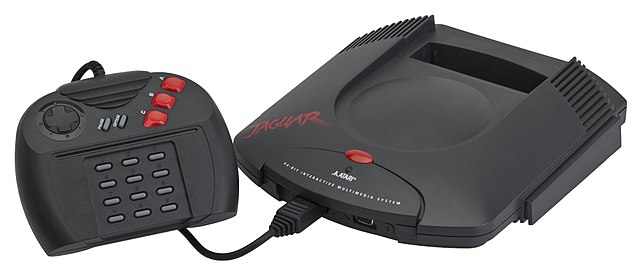The Retro Chameleon, originally called the Retro VGS then Coleco Chameleon prior to the loss of the Coleco Holdings license, is a cancelled home video game console. Its creators have stated that it was inspired by the second to fifth generations (1976–1999) of home video game consoles, and like most consoles of those generations, the Retro VGS had planned to run all of its games on individual cartridges, as opposed to optical discs and digital download. The Retro VGS was not expected to support any manner of online connectivity whatsoever, meaning all hardware and software released would have been the final product, and would not have the ability to update after release. A Kickstarter campaign was initially planned to raise funds for the project, but this was later moved to Indiegogo one week before the start of the campaign when a physical prototype was not produced.
CGI mockup of the proposed console.
The Atari Jaguar is a home video game console developed by Atari Corporation and released in North America in November 1993. Part of the fifth generation of video game consoles, it competed with the 16-bit Sega Genesis, the Super NES and the 32-bit 3DO Interactive Multiplayer that launched the same year. Powered by two custom 32-bit processors – Tom and Jerry – in addition to a Motorola 68000, Atari marketed it as the world's first 64-bit game system, emphasizing its 64-bit bus used by the blitter. The Jaguar launched with Cybermorph as the pack-in game, which received divisive reviews. The system's library ultimately comprised only 50 licensed games.
Atari Jaguar with original controller
The Jaguar utilizes a multi-chip architecture that was difficult to use for most contemporary developers.
The inputs and outputs of an NTSC Atari Jaguar
The original controller





